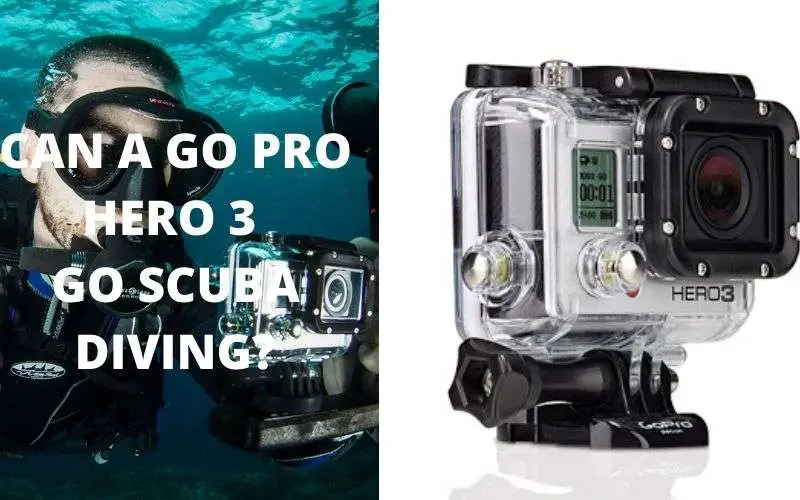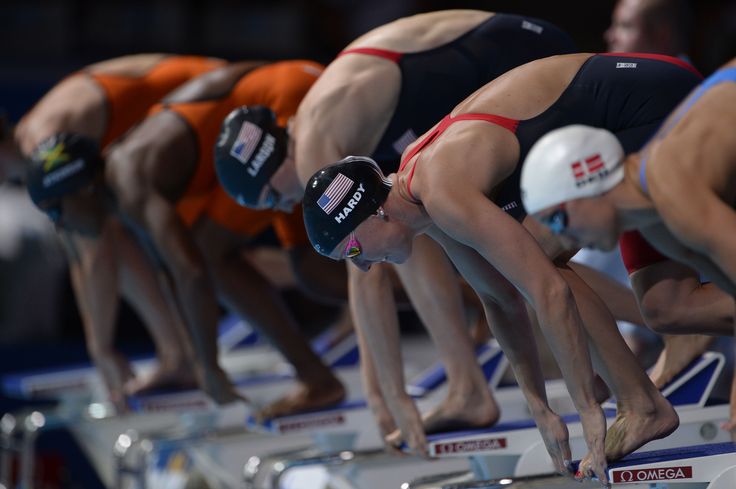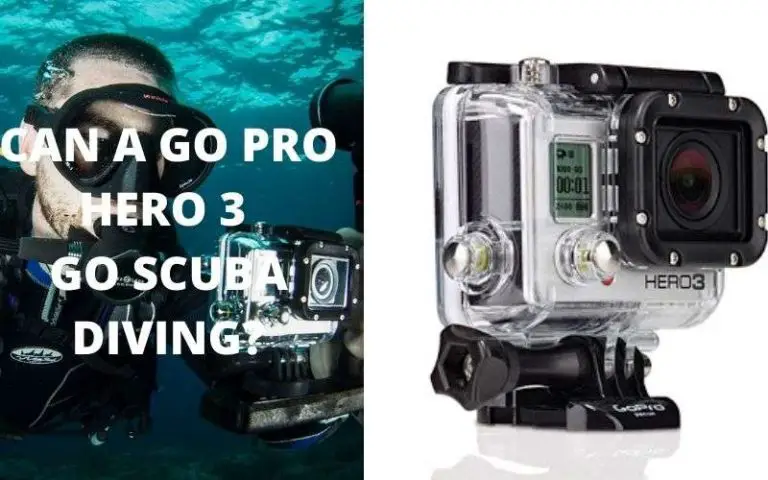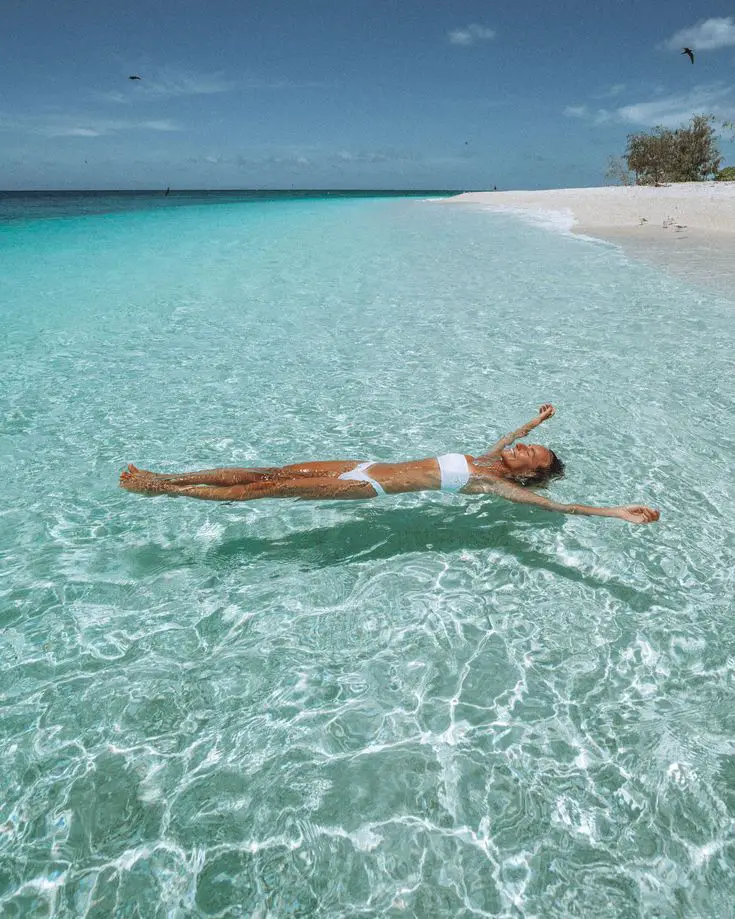
Swimming is an activity that offers both leisure and competitive opportunities. Whether it’s in the controlled environment of an indoor pool or the untamed waters of the open ocean, swimming presents unique challenges.
Many have wondered about the differences between these two settings and whether one is more demanding than the other. In this in-depth article, we explore the world of open water swimming versus pool swimming.
We’ll discuss the distinct challenges posed by open water, as well as how swimmers can adapt their techniques to excel in this dynamic environment.
Open Water vs. Pool Swimming: Uncovering the Challenges

Open Water Swimming
Open water swimming is an entirely different beast compared to the orderly lanes of a swimming pool. As you venture into the open waters of the ocean, sea, or even a large lake, you’ll quickly realize the unique challenges it presents.
Managing Currents and Tides
In open water, the first challenge that greets you is the unpredictability of currents and tides. Unlike the controlled environment of a pool, where the water remains calm, open water currents can vary in strength and direction.
This variability can significantly impact your swimming experience, affecting your pace, technique, and overall performance.
To succeed in open water, you’ll need to adapt your swimming style to account for the push and pull of these natural forces.
Dealing with Wind and Waves
Another challenge that open water swimmers face is the ever-changing combination of wind and waves. Wind can create surface chop, disrupting your strokes and making it challenging to maintain a steady rhythm.
Waves add another layer of complexity, often affecting your ability to breathe consistently. A rogue wave crashing just as you attempt to take a breath can lead to water swallowing or panic.
In open water, your skills are put to the test as you strive to maintain composure amid the capricious elements. Swimmers must master the art of adapting to the aquatic environment’s fluctuations.
Water Temperature and Weather Challenges
The open water offers no temperature regulation, unlike indoor pools. Water temperatures fluctuate, presenting a challenge to swimmers. Cold water may induce muscle cramps or discomfort, affecting your ability to regulate body temperature.
Additionally, sudden rain can lead to a drop in water temperature, impacting visibility. It’s important to recognize that even if the weather feels warm, the water may still be chilly, especially if it’s not an explicitly warm climate.
Navigational Challenges
Pool swimming is straightforward, with lane lines to guide you. However, in open water, there are no such markers. Staying on course during long swims or races can be challenging.
Strong currents and swells can disorient swimmers. Navigating your path becomes crucial, requiring you to adjust your course and maintain your heading despite the forces at play.
Fear of the Open Water
The open water environment can evoke fear and anxiety in some swimmers. The deep, vast expanse, limited visibility, and the thought of unknown creatures can trigger apprehension.
Even confident swimmers who excel in pools may encounter doubt when they realize that the reassuring pool walls and lifeguards are absent. The open water demands an extra level of self-assurance.
Potential for Boat Collisions
Boat traffic in open water presents another concern, especially in popular or crowded waterways. While sharing the water with boats, swimmers need to stay visible and avoid collisions.
This often means wearing brightly colored swim caps or buoys to enhance visibility. Swimming with a buddy or in a group is also advisable. In areas with heavy boat traffic, choosing to swim elsewhere might be the safest option.
Adapting Your Technique: Mastering the Open Water
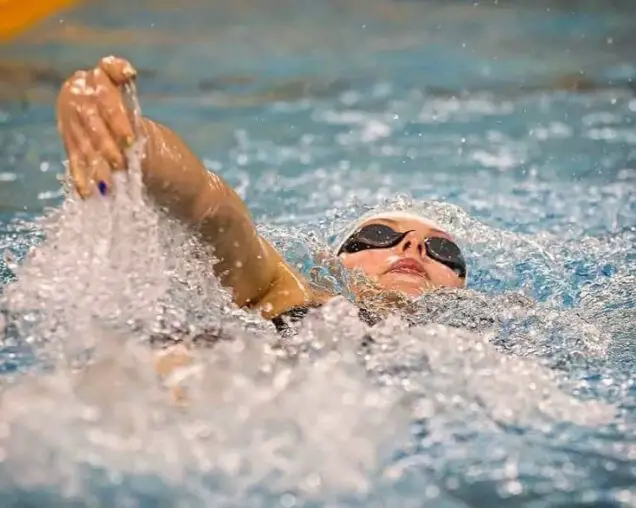
Open water swimming requires different techniques and skills to navigate its unique challenges. Let’s explore how swimmers can adapt their techniques to thrive in open water conditions.
Breathing Techniques
Bilateral breathing is a crucial skill for open water swimming. It involves alternating your breathing sides to maintain balance and coordination while navigating unpredictable waters.
Practice bilateral breathing by taking a breath every three strokes, alternating sides. This skill ensures you’re comfortable breathing from both sides, while still allowing you to keep an eye on your surroundings.
Sighting and Navigation
Sighting is the ability to look up and identify landmarks while swimming. This skill is essential for staying on course in cloudier waters. To sight effectively, incorporate a quick glance into your regular breathing pattern.
Lift your head briefly to spot easily recognizable objects like trees or buildings to ensure you’re heading in the right direction.
Stroke Modification
Your stroke needs modification to suit the dynamic conditions of open water. In rough seas and turbulent waters, a slightly shorter and faster stroke can maintain momentum and avoid obstacles.
Pay attention to your arm recovery, keeping your hands clear of waves to prevent resistance. Adjusting your technique to accommodate various conditions is vital for open water swimming.
Pacing
Finding the Right Rhythm
Pacing in open water is different from the consistency of a pool. The unpredictable environment of open water demands a more flexible approach.
Begin your open water swims at a comfortable pace. Acclimate to the conditions and gradually increase your speed based on your comfort and energy levels. This approach conserves energy, helping you maintain control during challenging open water swims.
Frequently Asked Questions
How does temperature affect swimming performance in open water versus a pool?
Open water swimming exposes you to fluctuating water temperatures, which can significantly impact your swimming performance. Cold water may lead to muscle cramps and challenges in regulating body temperature.
Pool swimming, in contrast, offers consistent and regulated temperatures to optimize swimmers’ performance. Adapting to changing open water conditions is essential to overcome this challenge.
What are the primary technique differences between open water and pool swimming?
Open water swimming requires different techniques and skills compared to the controlled environment of a pool. Essential skills include bilateral breathing for balance, effective sighting and navigation for course-keeping, stroke modification to adapt to waves and currents, and pacing strategies tailored to unpredictable conditions.
Pool swimming emphasizes consistency and technique in a calm setting.
Why do people tend to swim slower in open water compared to a pool?
Several factors contribute to slower swim times in open water. Unpredictable water conditions, such as waves and currents, can disrupt strokes and reduce speed.
The need for frequent navigation and technique adjustments further impacts pace. While open water presents unique challenges, swimmers can adapt their skills to overcome them.
Is it more challenging to swim in a lake or ocean than a swimming pool?
Swimming in a lake or ocean is generally more challenging than in a pool due to uncontrollable factors like waves, currents, temperature fluctuations, and lower visibility.
Pool swimming provides a controlled environment, allowing swimmers to focus on technique and pace without the added complexities of open water.
What are the disadvantages of open water swimming compared to pool swimming?
Open water swimming disadvantages include unpredictable water conditions, navigation challenges, difficulty maintaining a consistent pace, and potential hazards like marine life or debris.
Pool swimming offers a controlled setting, ideal for refining technique and pacing without these additional challenges.
How do open water and pool swimming times typically compare?
Comparing open water swimming times to pool swimming times can be challenging due to the significant differences in conditions and navigation. Open water swim times may be slower as a result of these unique challenges.
Pool swimming is characterized by consistent conditions and regulated temperatures, which facilitate faster and more precise time comparisons.
Can open water swimming be safer with the right precautions?
Open water swimming can be safe with the right precautions and preparation. Swimmers should be well-trained, have essential open water swimming skills, and follow safety guidelines, such as swimming with a buddy, using brightly colored swim caps or buoys for visibility, and choosing swim locations wisely to avoid heavy boat traffic.
Additionally, staying attuned to weather conditions and being aware of one’s limitations are crucial for ensuring safety in open water.
What types of swimmers are best suited for open water swimming?
Open water swimming caters to a diverse range of swimmers. Those with a strong sense of adventure, an affinity for nature, and a willingness to embrace its challenges are well-suited for open water.
However, open water swimming is not limited to experienced swimmers. Beginners can also enjoy open water swimming with proper training and guidance. It’s all about cultivating the necessary skills and gradually building confidence in this dynamic environment.
Conquering the Fear of Open Water Swimming: A Rewarding Challenge
Open water swimming offers a unique and rewarding set of challenges that set it apart from the controlled environment of pool swimming. The unpredictability of nature, the need to adapt to changing conditions, and the mastery of various techniques make open water swimming a thrilling endeavor.
Swimmers who embrace these challenges find themselves immersed in an adventure that can become a lifelong passion.
While open water swimming may be harder than pool swimming due to its inherent challenges, those who embark on this aquatic journey discover a profound connection with nature and an unparalleled sense of accomplishment.
Open water swimmers are more than athletes; they are adventurers who conquer the unpredictable waters, demonstrating resilience, adaptability, and a deep love for the wild side of swimming..
Open water swimming is a testament to the human spirit’s enduring quest to conquer the vast, untamed expanse of the natural world.
Conclusion
In the debate between open water and pool swimming, there’s no definitive winner. Both offer their unique experiences, challenges, and rewards. Pool swimming provides the structured environment and controlled conditions that enable swimmers to focus on technique and pace.
Open water swimming, on the other hand, immerses swimmers in the beauty and unpredictability of the natural world, offering an adventure filled with ever-changing challenges and breathtaking moments.



